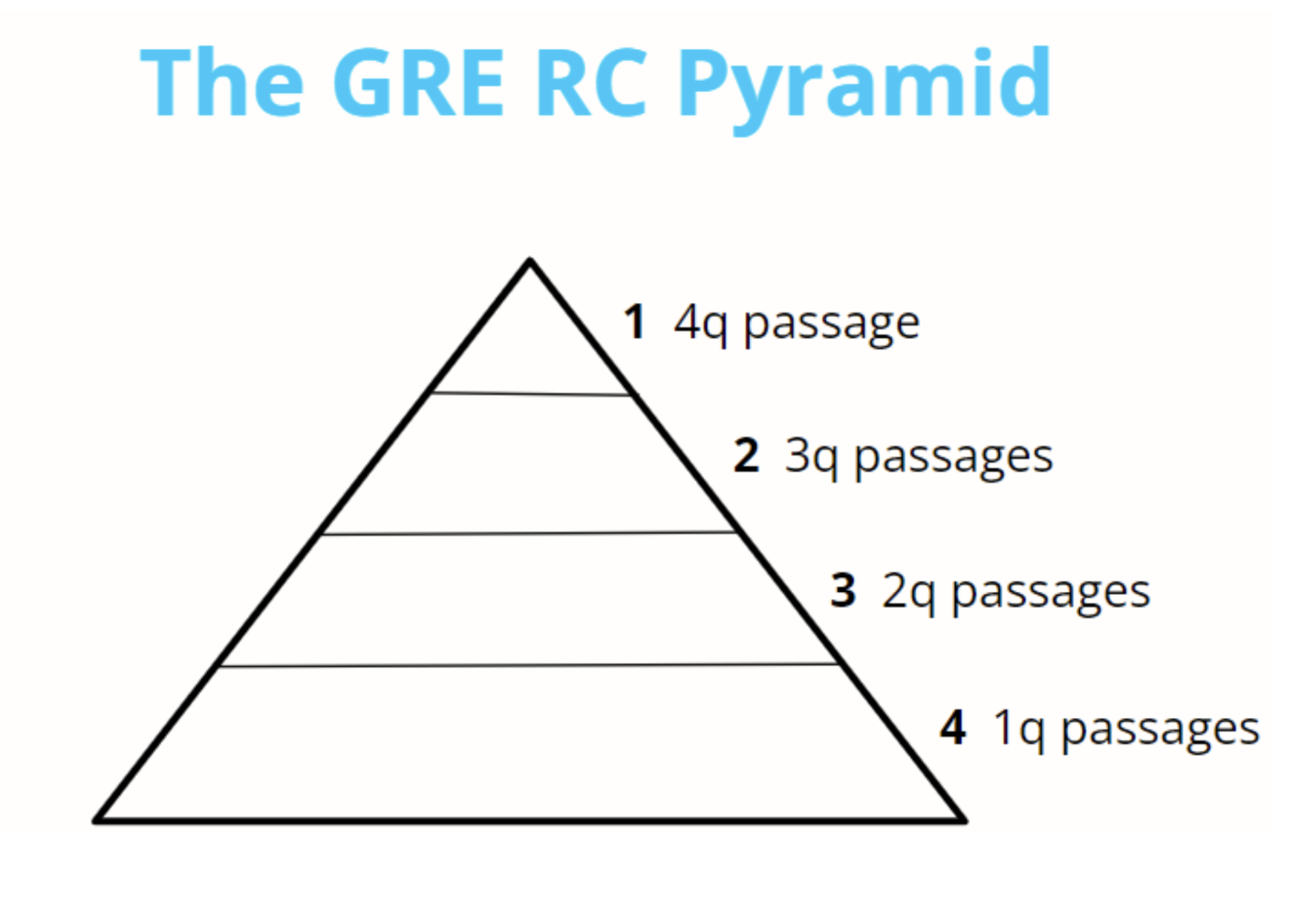There are only three types of questions on a GRE verbal reasoning section: text completion, sentence equivalence, and reading comprehension. (Text completion and sentence equivalence are quite similar, as discussed in our last article.) Feel at home on the verbal reasoning sections by knowing how many of each question to expect – and where in each section you can find them.
Verbal Reasoning Section
Let’s get right to it: there is a standard “flow” to every GRE verbal reasoning section:
Questions 1 – 6: Text Completion
Questions 7 – 11: Reading Comprehension
Questions 12 – 15: Sentence Equivalence
Questions 16 – 20: Reading Comprehension
The two types of vocabulary-based questions stay neatly separated, not jumbled, and the reading comprehension (RC) questions tend to come in equal blocks of 5. Rarely, the two “blocks” of RC questions are 4 questions and 6 questions, or 6 questions and 4 questions, respectively, shifting the numbering of the sentence equivalence questions accordingly.
The main benefit of knowing this flow is to help you make timing-related decisions. On each verbal reasoning section, you have just 30 minutes for 20 questions, for a brisk pace of 90 seconds per question. Some test-takers who studied their vocab flashcards like to fly through the vocabulary-based questions in order to know how to pace themselves on reading comprehension.
Test-takers who struggle with sentence equivalence (SE, which can be tricky) may prioritize everything else and then make quick decisions on the SE questions before time expires, knowing that if they do the section in order from question 1 through question 20, they’ll spend too long being indecisive on SE questions 12-15 and then have too little time for RC questions 16-20. When every point counts, these things are worth thinking about.
Another note: the text completion (TC) questions increase in difficulty and complexity from question 1 through question 6. Generally, expect questions 1 and 2 to be single blanks, questions 3 and 4 to be double blanks, and questions 5 and 6 to be triple blanks. Since the difficulty of your second scored verbal reasoning section is determined by your performance on the first scored verbal section, a second section with more double and triple blanks is a sign that you did well on the first section.
Perhaps even more important than knowing the “flow” of the sections is knowing the breakdown of reading comprehension passages and questions. This is important for allocating your time wisely.
GRE Reading Comprehension (RC) Passage
GRE reading comprehension passages may be accompanied by anywhere from 1 to 4 questions. The longer the passage, the more questions accompany it:
4q passage: about 400-450 words
3q passage: about 150-200 words
2q passage: about 125-150 words
1q passage: about 50-125 words
The ETS (Educational Testing Service, the administrators of the GRE) has an established pattern not only for how many passages of each length appear, but for the sections in which those passages appear.

Section 1
4q passage
3q passage
1q passages (3)
Section 2
3q passage
1q passage
2q passages (3)
The best news is that the majority of reading comprehension passages you will encounter on GRE verbal are very short. Even the 3q passages are capped at around 200 words; the biggest jump in length is from these 3q passages to the single 4q passage, which always comes in the first, medium-difficulty section. More good news: you’ll never get stuck with a long 4q passage that is measurably more difficult than anyone else’s! The GRE doesn’t like to leave these things up to chance. They call it a standardized test for a reason.
Let’s talk timing: 7 of the 10 RC passages on GRE verbal are less than 150 words and are accompanied by only one or two questions. There’s no reason to think of these passages as a big time drain. Comprehending and retaining such a short passage well enough to answer one or two questions about it is a fairly basic and easily-practiced skill, even though the passages may complicate the matter somewhat by being dense or technical. Bottom line: these passages are nothing to be afraid of.
In a way, the 3q passages provide the most “bang for your buck.” The passages are, on average, hardly longer than a 2q passage, so you get one question for every 50-70 words of passage read. These represent your best opportunity for knocking out a few questions in very little time, and there is one on each verbal section.
The 4q passage has the most potential for derailing your timing strategy. It can be intimidating because of its beefed-up length compared to all other RC passages. The most important thing is to avoid getting lost in the details. You don’t have to remember everything. After all, the passage isn’t going anywhere; if you get a question about a certain detail, you should be able to find that detail in a reasonable amount of time. Instead of sweating every detail, focus on understanding the overall structure and purpose of the passage. This is the kind of comprehension that RC is built around. This “zoomed out” comprehension can even provide you with a mental map of the passage for finding the details when you need them.
In our next article, we’ll introduce the most powerful tool for understanding the big picture of reading comprehension passages on GRE verbal.
Are you preparing for the GRE? Book a 30-minute complimentary consultation with a top-scoring tutor.
Contributor: Elijah Mize
